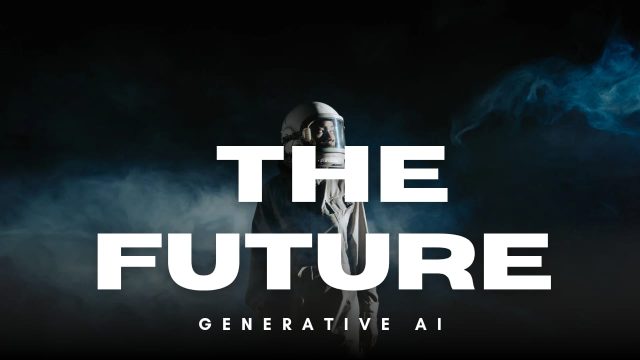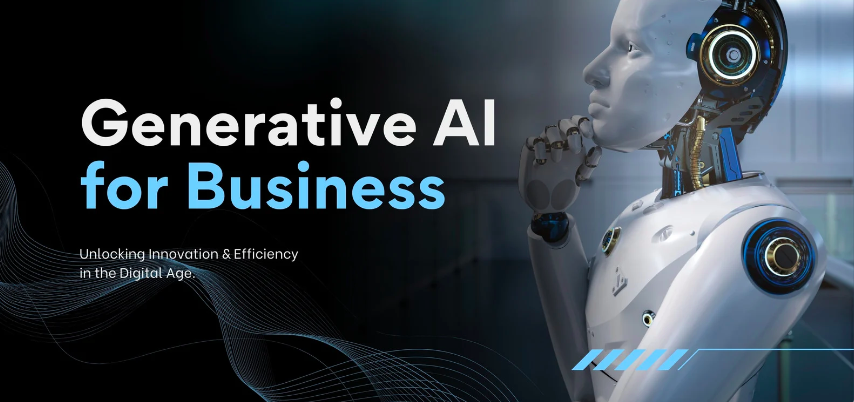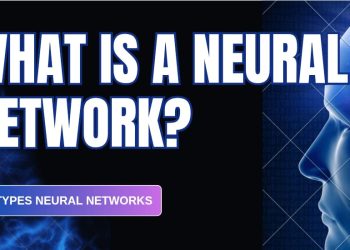Generative AI: An In-depth Overview
Generative AI is a rapidly growing field in artificial intelligence that focuses on creating new content based on patterns learned from existing data. From creating images and music to generating text and video, generative AI has proven to be an invaluable tool across industries. This article explores what generative AI is, its functions, how it works, and how it can be used in our daily lives to enhance productivity and creativity.
What is Generative AI?
Generative AI refers to a class of algorithms or models that can generate new data or content by learning from existing datasets. Unlike traditional AI, which is often used for classification, prediction, or decision-making, generative AI’s goal is to create something novel—whether it be text, images, audio, or even video.
Generative AI models are trained on large datasets containing numerous examples of the type of content they are supposed to generate. These models learn the underlying structure, style, and patterns of the data to produce new outputs that are similar, yet unique, to the in
put data.
One of the key aspects of generative AI is that it can generate content that is indistinguishable from human-created work, which is why it has gained so much attention in recent years. Examples include creating realistic human faces (as in the case of GANs), generating realistic dialogue in conversations (like GPT models), and producing music compositions (using AI systems like OpenAI’s MuseNet).

For More Information – LINK
What Are the Functions of Generative AI?
Generative AI has various functions across different sectors. Here are some common and important functions:
-
Content Generation:
-
One of the primary functions of generative AI is to produce content, such as text, images, audio, and video. For example, tools like OpenAI’s GPT-4 can write articles, blog posts, and essays based on specific prompts, while DALL·E generates images from textual descriptions.
-
-
Creative Applications:
-
Artists and designers are increasingly turning to generative AI for help in creating new forms of art, music, and even fashion designs. This is particularly useful in industries like advertising, film production, and digital art, where new ideas are constantly needed.
-
-
Data Augmentation:
-
In machine learning, generative AI can be used to create synthetic data to train other AI models. For instance, when there is a lack of sufficient labeled data for training, generative AI models can generate new data that is similar to the existing dataset, thus augmenting the dataset.
-
-
Product Design:
-
In industries like automotive or fashion, generative AI is used to generate design prototypes based on specified parameters. It allows designers to experiment with new concepts and ideas that they may not have thought of on their own.
-
-
Personalization:
-
Generative AI can help create personalized experiences, such as recommending products or services based on individual preferences, and even generating custom content for users, such as personalized email campaigns or customized music playlists.
-
-
Simulation and Modeling:
-
Generative AI can be used for simulations and modeling, which is useful in scientific research, drug discovery, and predicting various phenomena. For example, in drug discovery, generative models can help design molecules that could have potential therapeutic benefits.
-
How Does Generative AI Work?
Generative AI models are typically based on a few different kinds of algorithms and approaches. there are some methods are as-.
1. Generative Adversarial Networks (GANs)
GANs are one of the most famous types of generative models. two networks a generator and a discriminator. The generator creates new content (like images or videos), while the discriminator evaluates whether the content is real (from the training set) or fake (generated by the generator). Both are compete with each other the generator becomes better at producing realistic outputs.
For example, GANs have been used to generate highly realistic images of human faces that do not belong to any actual person, and this technology is often used in creating avatars for video games or virtual worlds.
2. Variational Autoencoders (VAEs)
VAEs are another type of generative model that learns to represent data in a compressed form, known as the latent space. The model then decodes this latent representation back into a new data sample. VAEs are particularly useful in generating data that follows the same distribution as the training data.
VAEs are often used for generating new faces, handwritten digits, and other forms of media. The key difference between VAEs and GANs is that VAEs do not rely on an adversarial setup but instead focus on learning a latent representation.
3. Recurrent Neural Networks (RNNs)
RNNs are commonly used in generating sequential data, such as text or music. These models have the ability to remember previous elements in a sequence, which makes them ideal for generating content that depends on context, like generating paragraphs of text or musical compositions. They are often employed in AI-driven chatbots or dialogue systems.
4. Transformers and Language Models
Transformers are the foundation of many state-of-the-art generative AI models for text. Models like OpenAI’s GPT (Generative Pre-trained Transformer) and Google’s BERT are based on transformer architecture. These models are pre-trained on vast amounts of text data and can generate human-like responses when given a prompt.
GPT-4, for instance, is capable of writing essays, answering questions, and even creating poems. It works by predicting the next word in a sentence based on the context of the words that came before it, which enables it to generate coherent and relevant text.
How to Use Generative AI
Generative AI is becoming more accessible, and there are several ways you can use it, both in personal and professional contexts.
-
Text Generation:
-
Tools like GPT-4 can help you generate text for various purposes. You can use it to draft blog posts, write stories, generate creative content, or even write code. For businesses, these tools can automate content creation or assist in customer service via chatbots.
-
-
Image Generation:
-
Platforms like DALL·E allow you to generate images by simply describing them with text. This can be used for creating visual content for websites, social media posts, or even art. Graphic designers can use generative AI to speed up the creation of visual assets and explore new design ideas.
-
-
Audio and Music:
-
Musicians and producers can use AI to compose new melodies, harmonies, or entire songs. Similarly, AI-generated voiceovers can be used in podcasts, video games, or movies.
-
-
Video Creation:
-
Some generative AI models can create video content by transforming scripts into animated scenes or even generating entirely new video clips based on input text.
-
-
Personalization:
-
AI-driven personalization tools are already being used by companies to generate tailored marketing materials, product recommendations, and dynamic advertisements based on user behavior.
-
How Generative AI Helps in Our Work
Generative AI is transforming how we work in many industries.
-
Boosting Creativity:
-
Generative AI acts as a powerful tool for creative professionals, helping them brainstorm ideas and generate original content quickly. Artists, writers, and designers can use generative AI to overcome creative blocks and experiment with new concepts.
-
-
Automating Tedious Tasks:
-
For example, it can generate reports, summaries, or even code, freeing up employees to focus on higher-level tasks. In customer service, AI-powered chatbots can automatically respond to common queries.
-
-
Enhancing Productivity:
-
By providing fast and accurate content generation, generative AI helps professionals in fields like marketing, advertising, and software development to meet deadlines, increase output, and improve efficiency.
-
-
Improving Decision-Making:
-
In data-driven industries, generative AI models can simulate various scenarios, helping businesses make better decisions. In finance, for instance, AI models can predict market trends and assist in portfolio management.
-
-
Personalized Learning:
-
Educational tools using generative AI can create customized learning experiences. AI tutors can adapt to the learner’s progress and provide personalized feedback, making learning more effective and engaging.
-
Conclusion
Generative AI is revolutionizing many aspects of our personal and professional lives. Whether it’s creating content, automating tasks, or enabling creativity, generative AI’s applications are vast and growing. By understanding how it works and how to use it effectively, individuals and businesses can leverage this technology to drive innovation, boost productivity, and open up new possibilities for creativity and problem-solving. As generative AI continues to evolve, it will only become a more integral part of our everyday lives.







